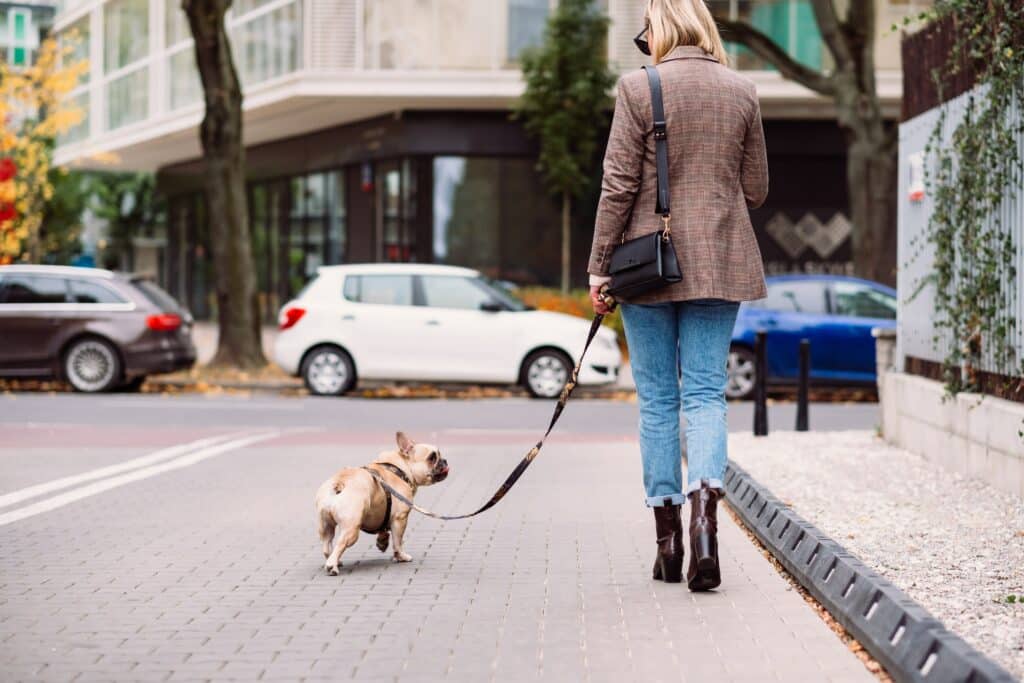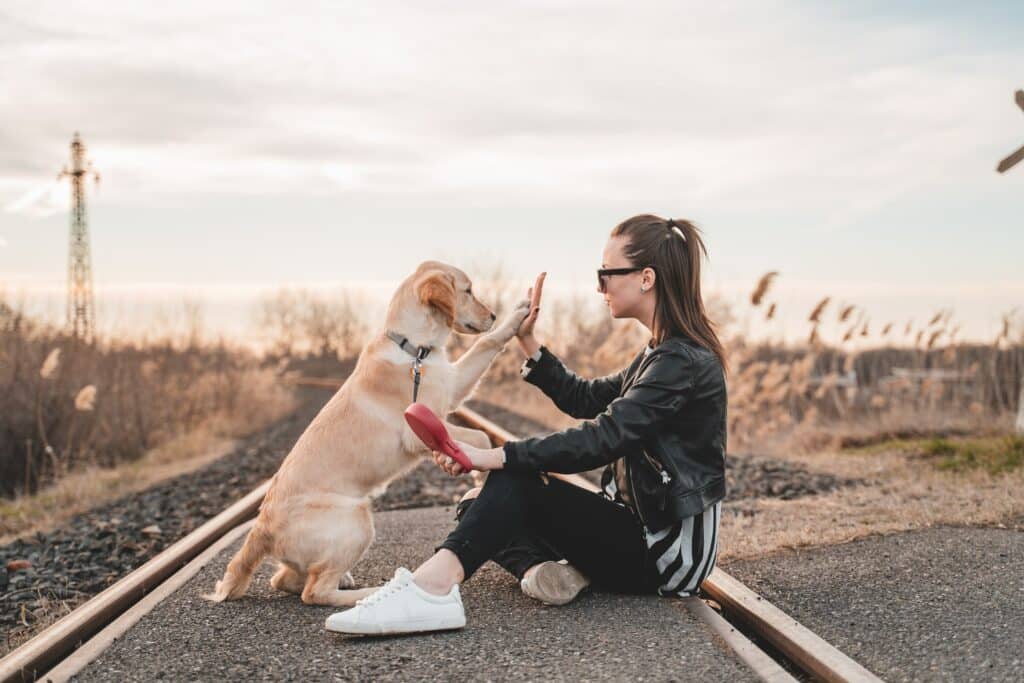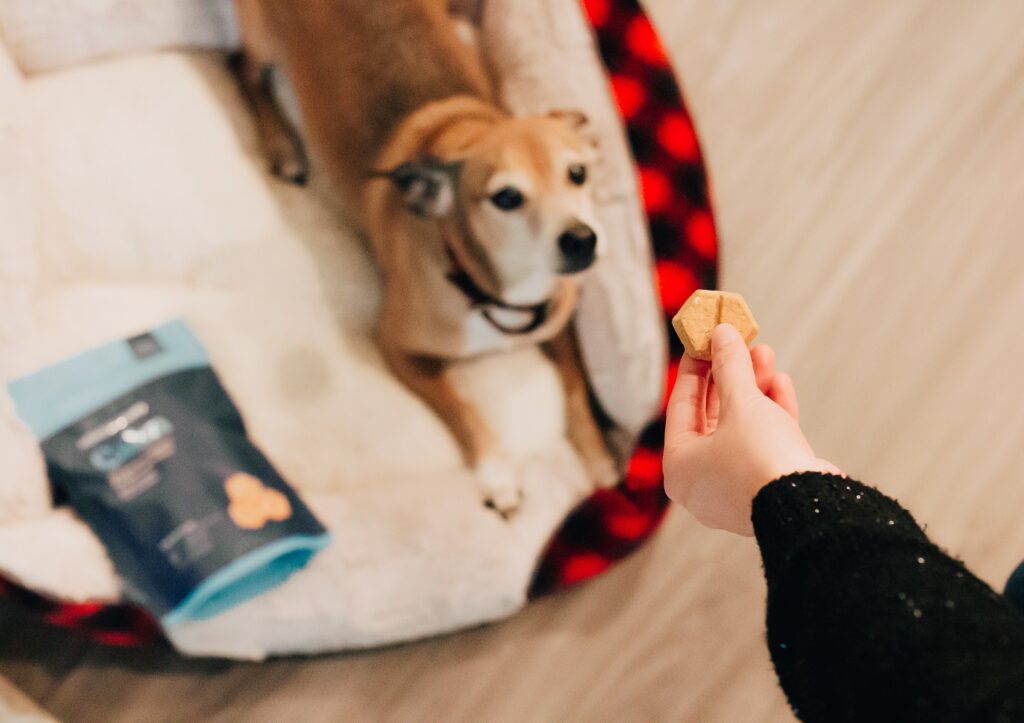We're an affiliate
We hope you love the products we recommend! Just so you know, we may collect a share of sales or other compensation from the links on this page at no additional cost to you. Thank you if you use our links, we really appreciate it!
Training a dog to come when called is an essential part of dog command training that you should not ignore.
An obedient dog who responds to their master’s beckon shows a sign of submission and loyalty above many other reasons.
Training your pup to make a reliable recall could also be a lifesaving prompt when you go out with them to the parks or busy streets.
Your dog could just be on the loose during the walk and they may go into dangerous situations that could turn tragic. Having the ability to grab their attention back in such cases could be a lifesaver for them.
Follow us along to learn how to train a dog to come when called every time. We will give you detailed insights on how to start and all that there is to know about dog recall training.
What Is Recall Training for Dogs?
Recall training is the process of teaching your dog to come back when called. Yes, you heard me right! You can actually call your dog and have them respond immediately regardless of where they were or what they were doing.
Look at it this way; recalling your dog is like asking them to retreat back to you and wait for further instructions or follow your lead.

It is an obedience skill that every dog owner should instill in their furry companions despite their breed, age, and size.
You can train your pup to respond to a variety of verbal cues when in need of their presence including calling out their name or simply saying ‘come’.
Other helpful signals that will sort you out, especially during the training sessions are hand signals and whistle commands.
When Should You Start Recall Training?
You should always try and start recall-training your dog right from their puppyhood days. Don’t wait until it is too late to start teaching them how to obey basic commands.
Training a puppy is much easier for you because they are at a critical development stage and are most likely going to grab and retain new skills as they grow older.
Do you have an adult dog that doesn’t respond when called? Don’t worry, it is never too late to begin recall-training your furry friend.
Adult dogs can still learn how to come when called like puppies but you will have to spend much time in every stage to ensure they grasp it well.
This will also depend on your dog’s previous training experiences, their mental, and physical health, and how easy they are to please & grab new commands.
Why Is Recall Important for Dogs?
Most dogs would always love to take the lead when strolling the park, or even during your evening walks and runs around your neighborhood.
There is nothing wrong with letting them take the lead and show you the way back home. But before you do so, you need to be confident that you can recall them back to your lead with ease.
Learning the skills on how to get your dog to come to you could be very helpful in emergencies.
If your dog gets off the leash and runs towards the freeway, calling them back to you could make the difference between a tragic outcome and a safe return to you.
Recall training is therefore important to all dogs because of one word, Safety!
If your dog runs off in a public space and encounters an aggressive animal, calling them back to you could just mean you’ve saved them from serious injuries.

The practical examples can go on and on but one thing is for sure, we always encounter such situations where we need to protect our dogs from unknowingly walking into danger.
On the fun side of things, recalling your dog could spice up the bond between the two of you and make your interactions even better.
You can now call your furry companion back when playing fetch with them and just have their attention when you need to stay up together.
How Long Does It Take to Teach a Dog to Come When Called?
The period you need to train your dog to come when called will largely depend on their age and the level of behavioral training they possess.
1. Puppy
You can easily teach your potty-trained puppy to respond when called in 4 to 6 weeks with consistent training and drill.
Some puppies might take a shorter time while others can take longer depending on how fast they develop new habits.
2. Adult dog
An adult dog who knows basic commands such as ‘sit’ and ‘stay’ can take up to 4 weeks to achieve a reliable recall.
Dogs with no previous training experience can take upward of 2 months to come back when called.
This timing is based on consistent training but it could differ from your dog based on their personality, mental traits, and predisposition.
It is important to know that recall training is not a one-off event, it is a lifelong process that should be practiced to make it perfect.
Things You Need
There are a few things that you will need to help you train your dog to come when called. They include:
- A quiet & serene environment
- Special tasty dog treats
- Your dog’s favorite toys
- A training line lead
- Harness
- You need patience and consistency (Very important!)
- More treats!
A Comprehensive Guide on How to Train a Dog to Come When Called – Recall Training
Step 1: Preliminaries
Look for a secure and serene area where you are going to carry out the training. This could be a fenced area in your backyard or a roomy space inside your house.
Make sure to find a place where your dog cannot easily run away or get distracted by the environment.
The next thing you have to figure out is what motivates your dog. Most dogs are carried away by a tasty treat while others prefer engaging in some fun game with their favorite toys.
Just be sure that your dog really loves whatever you are giving them as a reward.
The ideal item for positive reinforcement should be rare and very special to the dog. Not something they get every day without ‘working for it’.
Step2: Choose your verbal cues
What name would you want your dog to respond to?
You have the freedom to choose the cue word of your liking but we recommend such words as your dog’s name, ‘come’, ‘here’, ‘back’, or phrases like ‘come here’ or ‘let’s go’.
Whatever word/phrase you choose, make sure to stick to it and tag it along the training to the very end. You can also opt for a whistling command but make sure you follow the same rhythm with each whistle.
Step 3: Call your dog
Walk a few yards from your dog and introduce the cue word with excitement and enthusiasm. Don’t use a sad tone and/or face when recalling your dog, you might just scare them away from you completely.
The objective is to make your pooch feel comfortable and embrace you while looking for more added fun. You can increase the chances of receiving a positive response by getting down to your dog’s level.
Step 4: Reward your dog
Once your dog responds to the first call, give them a tasty treat and say ‘yes’ or clap your hands with excitement.

If your active dog is motivated by toys, this is the time to pull out their favorite toys and engage with them in a short game to get them to feel appreciated.
Some dogs might respond to the beckon by walking towards you while barking. You might also need to learn how to train your dog to stop barking if you notice they do so excessively.
Step 5: Increase the distance
If the first few calls are positive, you can now walk a few more paces from your dog to increase the distance of separation.
Don’t go too far and don’t stay too close. You should be able to see your dog’s eyes when gauging the primary distance between the two of you.
Step 6: Set up distractions
Recall training is not successful until you learn the skills on how to get a dog to listen when distracted. So here we are now.
After your pup has responded to the first few beckons and with different distances, it is now time to drive their minds away with distractions.
The distractions could either come from a friend or a family member. We don’t recommend using another pet (no matter how trained) because it might complicate your dog’s attention toward you.
Ask your friend to engage with the dog either by petting them or doing something that captures their concentration.
You can then take a few walks away from the dog but not too far. When you get into your preferred space, ask the other person to tone down the distraction and utter your verbal cues once more with much enthusiasm.
Your dog might disappoint you by failing to turn up in the first few instances, but this is quite normal at this stage.
Reward your furry friend once they show up and get where you are. Engage with them for a few more seconds and ask the other person to call them back with enthusiasm and see how they respond.
Practice this recall game back and forth until such a time when your dog is making noticeable progress with their responses.
Always ensure that every time whoever calls the dog looks more exciting and appealing than what the pooch is doing on the other side. This will teach them that fun doesn’t always seem to be where they are.
Step 7: Move to a practical example
Once your dog is showing progress in responding when summoned up, you can now shift their attention to practical training.
How about trying to call them as you walk with them along your neighborhood’s sidewalks?
Get a long training lead line and harness to secure your dog during these initial practice sessions. This gives them the freedom to take a few strides around while assuring you that you are in full control.
As you walk down with them, they might be already taking the lead and sniffing around the grasses inspecting some insects or marked territory.
Call out their name and utter the cue word with a low and welcoming tone and see how they behave. If they miss what they’re expected to do, you can try reeling them lightly using the lead line and rewarding them once they get closer.
You can make the calls more intriguing as you progress with the training by calling them out from too much sniffing or chasing after a passing cyclist.
Step 8: Practice
The last but definitely not the least step of how to train a puppy to come is practice. Don’t put your tools down with just a few attempts.
You should make every effort to be consistent and train with lots of practice for the best results. Repeat where necessary and do not hesitate to stop and start over again where need be.
Watch this video by Zak George (professional dog trainer), to get a visual outlook of how he trains a Pembroke Welsh Corgi to come when called.
What Do You Do When Your Dog Won’t Come?
It is much expected (especially during the first sessions) that your pup will fail to show up when called. Don’t be discouraged by this because dogs are creatures of habit and they can only get better when doing things repeatedly.
One major reason that your dog may fail to turn up even after a few attempts is that they may have lacked the basic command training that teaches dogs to respond to cues.
Another reason is that your doggo could be prone to easily get distracted during training so make sure you choose a more serene environment.
Here’s what else you can do to help solve the situation:
- Try calling your dog once more while walking away from them. This will prompt them that it’s time to leave the place and they could just follow you.
- Your dog might have responded during the first call and you told them off without praising them. This will discourage them from showing up in subsequent calls because they didn’t find it more amusing to come to you. Call your dog only when you can praise and reward them generously.
- Another helpful tip is to use special rewards that they don’t get every other day. If you use regular treats, your dog might be less motivated to show up because they know they will still get the treats anyway.
- Do not punish or yell at your dog for failing to come when called. This will only make things worse for you and possibly ruin your bond.
If you are finding difficulty training your dog, you might want to look at the Brain Training for Dogs eBook, it has tons of information that teach you how to train your dog on obedience, tricks, and many other things.
How To Get a Dog to Listen When Distracted
Getting your dog to listen when distracted can be the most challenging part of recall training. To solve this problem, you need to know what distracts your dog and what you can do to tone down the distraction.
Dogs get distracted when they get overwhelmed by the new environment and proceed to look for more fun. You can beat this distraction by showing your dog that you are the best source of fun and excitement for them

Always call them with a happy face and an exciting tone to please their eyes and ears. Recall training should be a fun experience for the dog.
You can make it better by going to their levels and using arm signals to show that you are looking forward to embracing them.
Always have a special treat to reward your dog when coming from a distraction to show them that you can offer more than whatever overwhelmed them.
Frequently Asked Questions (FAQs)
1. Can all dogs learn recall?
Yes, it is possible to teach any dog to recall with proper training, consistency, and patience.
Some dog sizes and breeds might be more challenging than others but if you play your cards right, you can have any dog develop a reliable recall.
2. Should I use a dog whistle for recall?
A dog whistle can be used for recall training but you should not rely on it as your sole cue. These devices produce high-pitched sounds that dogs, and other animals, can hear but humans cannot.
What happens when your dog runs out in an emergency at the park? Uttering the phrase ‘come here’ is much easier than reaching out for your dog whistle when your pup is on the run.
Reliable recall should help us solve emergencies and help dogs from getting into trouble and it is therefore best to stick to spoken words as your main cues.
We recommend using a dog whistle for recall when your dog is easily distracted and cannot easily understand spoken words.
3. Is it too late to teach a dog recall?
It is never too late to teach your dog to recall. Puppies and senior dogs alike can learn new cues at any point in their healthy lives.
It will certainly require more effort and time to fully train a senior dog than a puppy but at the end of the day, you will achieve your goal.
‘Let’s Go’ – Summing Up
There you have it guys, that’s all you need to know on how to train a dog to come when called every time.
Remember this process calls for your patience, consistency, and positive attitude to get the best from it.
The benefits of a reliable recall can span from the dog’s safety to more fun, bonding experience, and the peace of mind you get when Fido recognizes your voice above all other distractions.
Make sure to use positive reinforcement techniques to reward your dog and make them look forward to more as they create the habit.
Recall training is a lengthy process that may take your time, but it is also the opportune moment to spend quality time with your pup as you instill the benefit of good behavior in them.
Laura is the founder of Furs'n'Paws. She is a also a pet writer and expert with more than 20 years of experience of working with dogs and cats. She developed a very strong love for animals at a young age. Her passion led her to establish a thriving pet sitting and dog walking business in Dubai. As an expert in pet training, behavior, and nutrition, Laura is committed to helping pet owners and pet lovers by offering high-quality information on a wide range of topics.



2 Responses
Thank you so much for your precious guidance !
Glad you found it helpful, Yasmine!